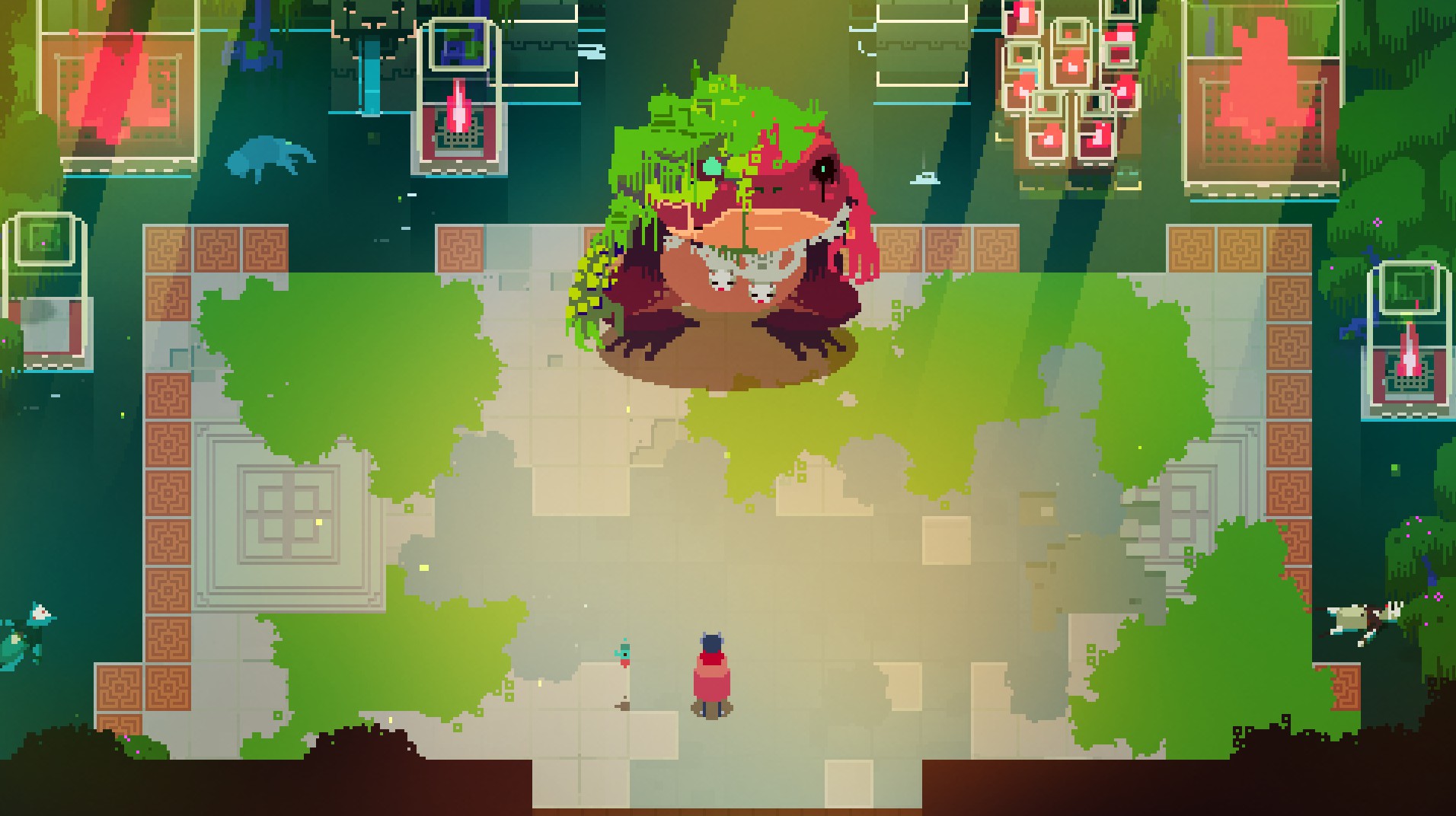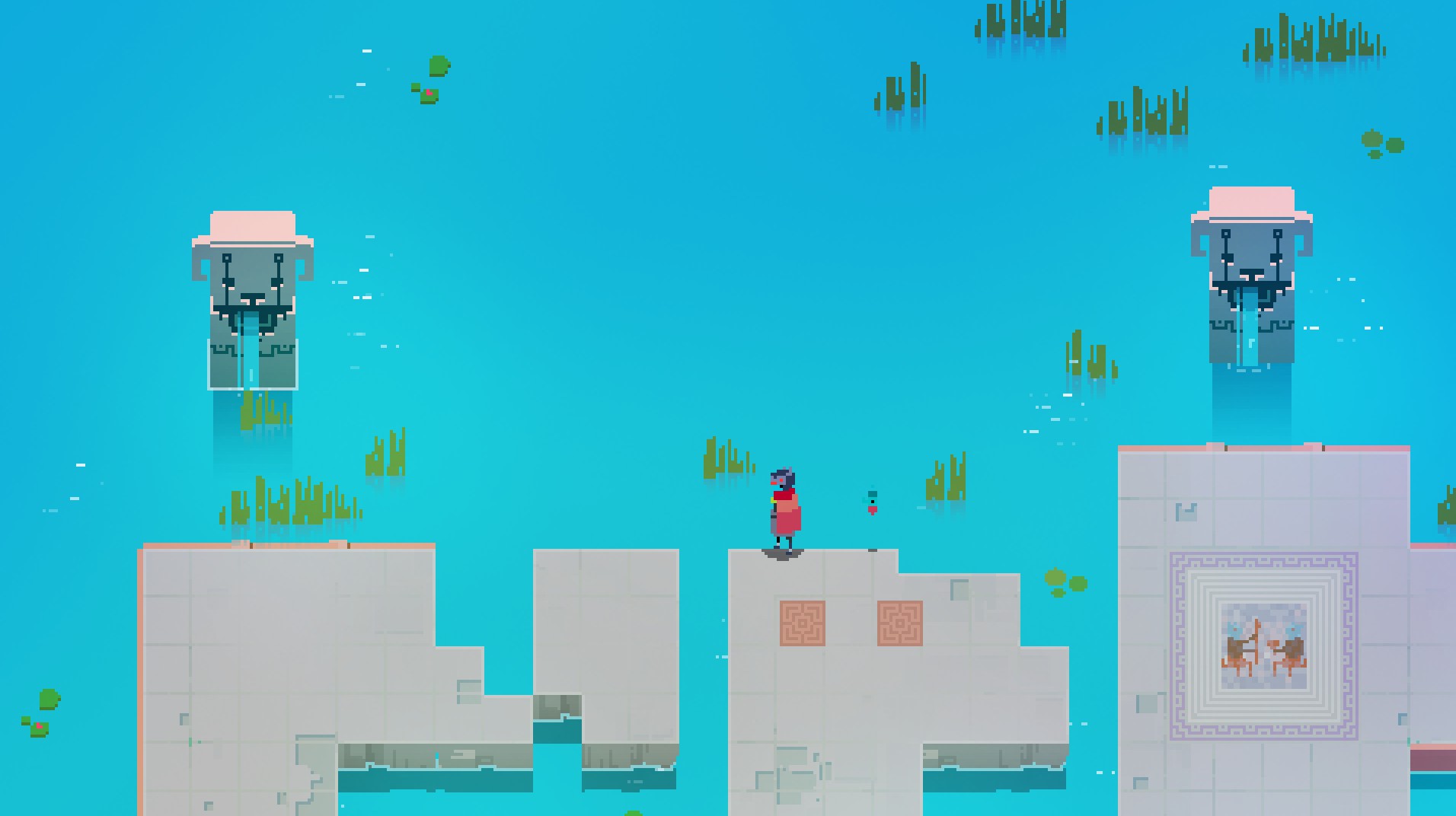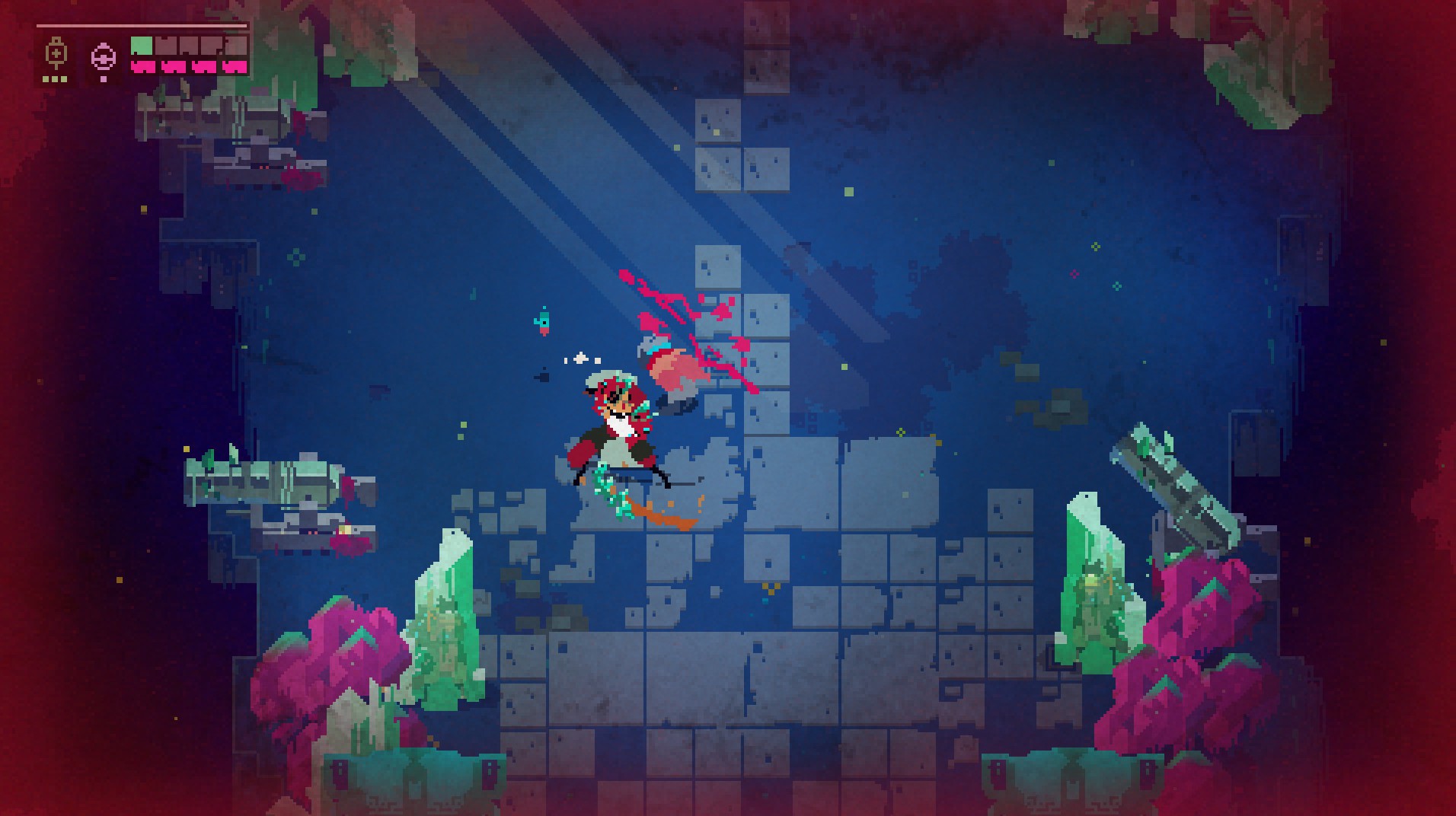The concept of flow, although originally nestled exclusively within the field of psychology, is a term used by many game designers when looking at achieving “immersiveness” and atmosphere in interactive form. It basically describes the moment when someone enters a highly focused mental state, forgetting about reality and getting submersed into whatever experience is taking place. As it turns out, I also think it perfectly describes how I felt during my first few hours with Hyper Light Drifter.
Summarized by developers Heart Machine as a 2D Action RPG, Hyper Light Drifter surfaced on Kickstarter in September 2013 by promising a fast-paced, modern take on classics such as The Legend of Zelda: A Link to the Past and Diablo, mixing challenging combat with a carefully designed, detailed world of technological decay and eerie charm. The concept itself has lingered in Alex Preston’s mind for many years, partially inspired by the studio head’s long-term health problems which have found a manifestation within the game’s core gameplay. Walking through beautiful 16-bit inspired sceneries riddled with a grand sense of scale and annoyingly fun, yet deadly encounters with corrupted denizens and tricky bosses is often interrupted by brief moments of visual static supplemented by a main character coughing up blood.
If not for anything else, Hyper Light Drifter possesses an oddly intriguing sense of carefully thought-out atmosphere.
This overall focused direction can be apparent from the way the game’s Kickstarter has developed over time, too. The initial pitch for the project, although requiring a mere $27,000, has grown to receive $640,158, remaining to be a solid representation of the final product while also evolving into something much, much bigger. Originally intended only as a PC/Mac/Linux release, a sudden appearance of a new $220,000 stretch goal bringing the game to PS4/Vita had to be made to accommodate the immensely positive response to the campaign, in addition to versions for Wii U and, subsequently, Xbox One also becoming possible. As such, Hyper Light Drifter grew into a multi-platform project developed by a reasonably bigger team – that growth also being enabled by the realizations of additional funding goals.
It is then without a surprise that the game met numerous delays and re-scopes throughout its three year-long creation. Driven mainly by the team’s realization that they can deliver something truly special and partially due to Alex Preson’s unfortunately continuing heart-related issues, Hyper Light Drifter ceased to exist as a game that would release in mid-2014. Instead, an update from February 1st in the same year announced Heart Machine’s unwillingness to rush the project, with the team instead opting for take their time in creating a “polished, beautiful experience”. Back then, the estimated plan was to release at the end of 2014, but after a bit over a year the team dedicated their focus to shipping Windows and Mac versions in Spring of 2016.
These decisions stand proudly among 75 Kickstarter updates in total, most of which contain hefty amounts of gorgeous gifs mixed with honest, detailed reasoning behind most decisions that had happened around Hyper Light Drifter’s development. By being publicly active and constantly willing to respond to backers and fans, Heart Machine seem to have managed to keep their game in the public eye quite well throughout three years – proof being numerous cross-over appearances of the game’s main character in other Kickstarter protégés such as Paradise Lost: First Contact and Starr Mazer, in addition to Wii U’s Runbow. All in all, despite said delay to 2016 Hyper Light Drifter’s developers managed to consistently excite and inform backers of major development changes.
As it stands now, the end result is a ridiculously polished game that took me about 9 hours to beat (minus all the secrets and backtracking routes I haven’t bothered checking out). Hyper Light Drifter is far from an easy game though, and once again that’s not a big surprise considering its original pitch. You learn by failing consistently, partially due to the huge amount of confidence the game puts in its players initially and also thanks to an overly cryptic and minimalist way of presenting the world’s story and user interface. In a way, I appreciate this aspect greatly, as it’s perhaps the main reason for why I decided to describe my initial experience with the game as a blissful state of flow. Really, it’s an odd thing that you have to experience for yourself. That being said, gameplay-related stretch goals such as co-op and online challenge modes remain scrapped for the time being, although the first one is promised to be delivered soon as a free update. With those not really being essential features to Hyper Light Drifter, I also can’t really fault the developers for wanting to release a product in time instead of being dragged down by pesky add-ons. Plus, there is a new game plus mode enabled once you beat the main story, that being particularly brutal since it lowers player health to a maximum of two bars. As in, most enemies later down the line will practically required one hit to kill you.
Then again, despite my praises of the game I also can’t skip through the current issues that Heart Machine needs to deal with. There is one particularly major slip I can’t pass by gently, and that’s the game being locked down to 30fps. Admittedly, the lock is in place mainly due to GameMaker projects being essentially limited to whatever framerate developers have set in the process of creating a project. However, with this being a particularly problematic thing based on how fast-paced and reliant on quick responses the game is, many people have already voiced their dissatisfaction with this technical limitation. Heart Machine’s response to this has also been less than satisfactory, with the developers essentially saying that their game was “intended at 30fps locked” in addition to them not seeing a problem with such a frame rate to begin with.
In addition, some backers have voiced their concerns towards an Alt Drifter DLC becoming available for everyone after some time, despite the developers’ promise to keep said content exclusive to backers. This is, however, a more tricky issue, especially considering how the DLC in question contains a brand new character with unique move-sets and abilities. As someone that hasn’t supported the project in its crowdfunding stages I’m kind of glad I can purchase this content myself, but in the same time I can also see the validity of the concerns raised by some supporters of the Kickstarter.

Enemy designs have changed drastically throughout development, resulting in some rather nasty looking things.
Leaving those unfortunate slips aside, Hyper Light Drifter’s post-launch is somewhat of a familiar tale for Kickstarters these days. In specific, there is still lots of work to be done in terms of porting the game to other consoles. As of now, the game is only available for PC, Mac and Linux, while PS4 and Xbox One versions are expected to be out “likely this summer”. A PS Vita version is also in the works, although taking a bit longer due to memory optimizations and general porting issues originating from the platform’s hardware limitations. The bad news is that those looking to play the game on Wii U might be waiting a while, considering recent contractual issues between Nintendo and GameMaker (the people behind the game’s engine). While it is a bummer, Heart Machine has promised keys for different platforms to all backers that have selected Wii U as a preferred copy, that being the case if all else fails and the port doesn’t end up happening.
Needless to say, most physical copies also remain to be sent out, those including SNES style physical boxes, compact prints and softcover companion art books, all of which Heart Machine has promised to send out in the following months. Once again, such delays are a rather common trend with most Kickstarters run by small teams.
As it stands though, Hyper Light Drifter has come a long way since its inception on Kickstarter three years ago. The final game might be a bit too difficult for some, and even more unwelcoming in describing what’s going on in terms of story and navigation, but that exact ambiguity and simplicity also adds a ton of meaning and atmosphere to an already stunningly looking world. Add a magnificent audio score brought by Rich Vreeland (aka Disasterpeace) to support the experience with subtle ambient tracks and what you get is a really special action RPG that stands on its own, despite its numerous borrowings from classics such as A Link to the Past. In retrospect, I think those are the main reasons Hyper Light Drifter ended up attracting so many backers in the first place.






[…] reactions, such a technical restriction seemed weird even after playing through the game and enjoying it immensely. Luckily, a new Steam update just introduced 60FPS for the Windows release, along with a brand new […]